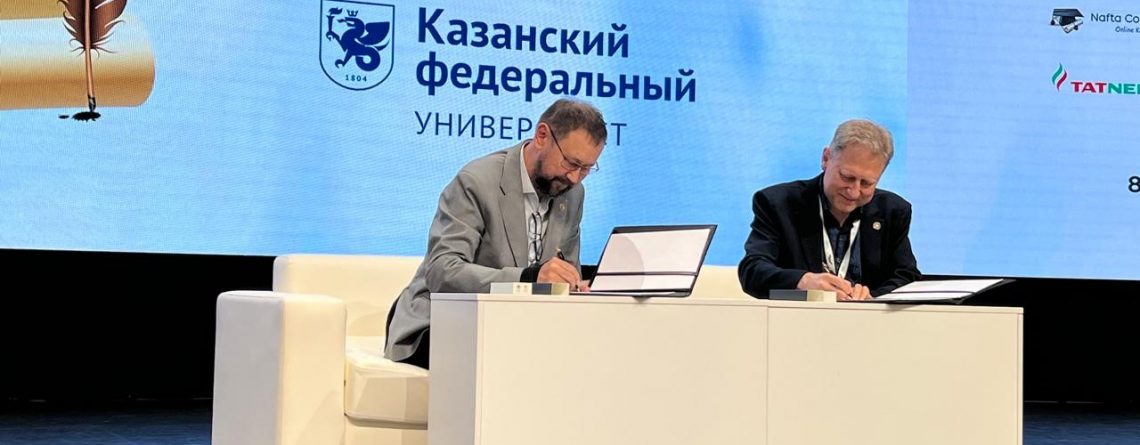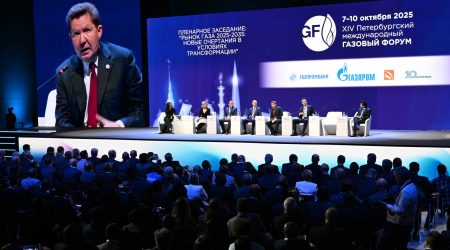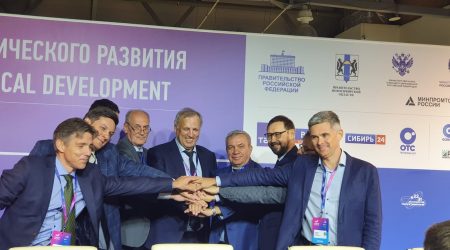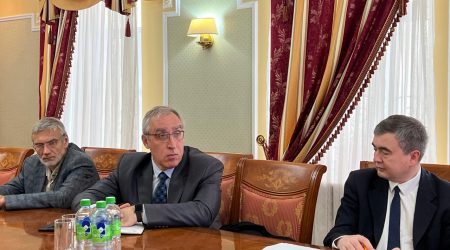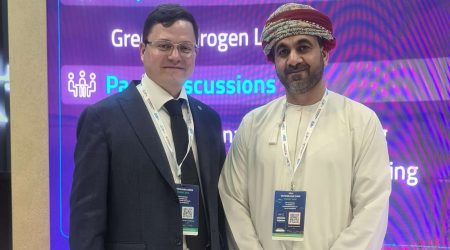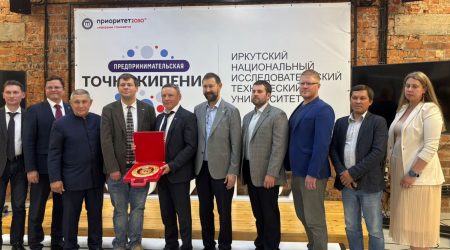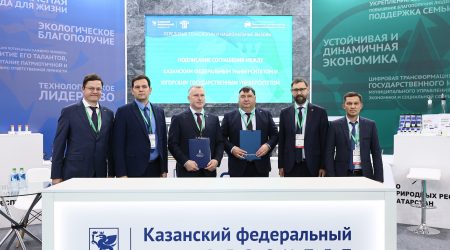Cooperation agreement signed with Nafta College
The signing was part of the DECOM-2025 oil and gas discussion forum held in Kazan on 8th to 10th September.
KFU students took part in the tournament on managing the development of a digital oil and gas field based on the interactive simulator PetroCup.
On the third and final day, a short film, Nikolay Golovkinsky. The Basic Law of the Relationship between Time and Space in Geology, was shown. Vice-Rector Danis Nurgaliev served as the creator and co-writer of the film.
Before the screening, the Vice-Rector gave a presentation on the topic.
The basic facies law formulated by Golovkinsky (1834-1897) in 1869 states that the structure of geological space and time are interconnected, but the time axis is not always orthogonal (perpendicular) to space. A layer of rocks can have different ages in different parts.
The scientist came to this conclusion while studying the Permian system within the Kazan and Vyatka provinces. The model of sediment accumulation in a shallow sea basin developed by the geologist was later figuratively called ‘Golovkinsky’s lentil’.
“The main facies law was 100 years ahead of the emergence of the sequence stratigraphic method. 25 years after Golovkinsky, the German geologist Walther rediscovered the facies law, which is now called the Golovkinsky-Walther law,” said Dr Nurgaliev.
After the screening of the film, Dr Nurgaliev shared an idea – to establish an award and medal named after the outstanding geologist for his 200th anniversary.
Coincidentally, the main purpose of the signed agreement is to develop the Shtukenberg Geological Museum, to which Golovkinsky made many contributions.
“Unique people work in the museum, and there are unique collections there. According to our estimates, fifteen video lectures can be recorded. This will be our contribution to cooperation with Kazan University,” said Rector of Nafta College Artur Aslanyan, who is a KFU alumnus and taught here in 1996 – 2003.
In conclusion, Danis Nurgaliev noted that the funds of the 220-year-old museum contain many interesting exhibits, including a large collection of meteorites, five of which were found in Tatarstan.

